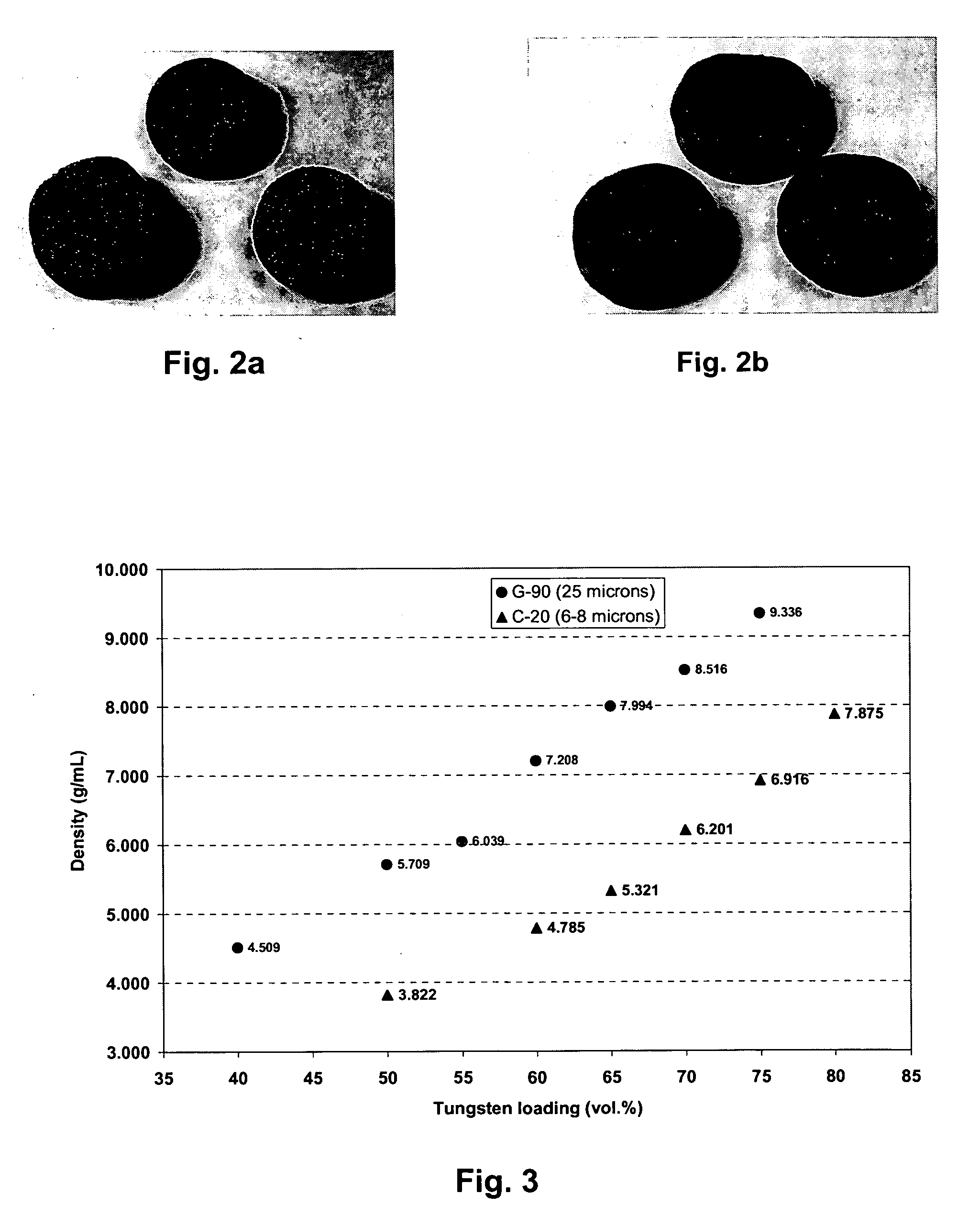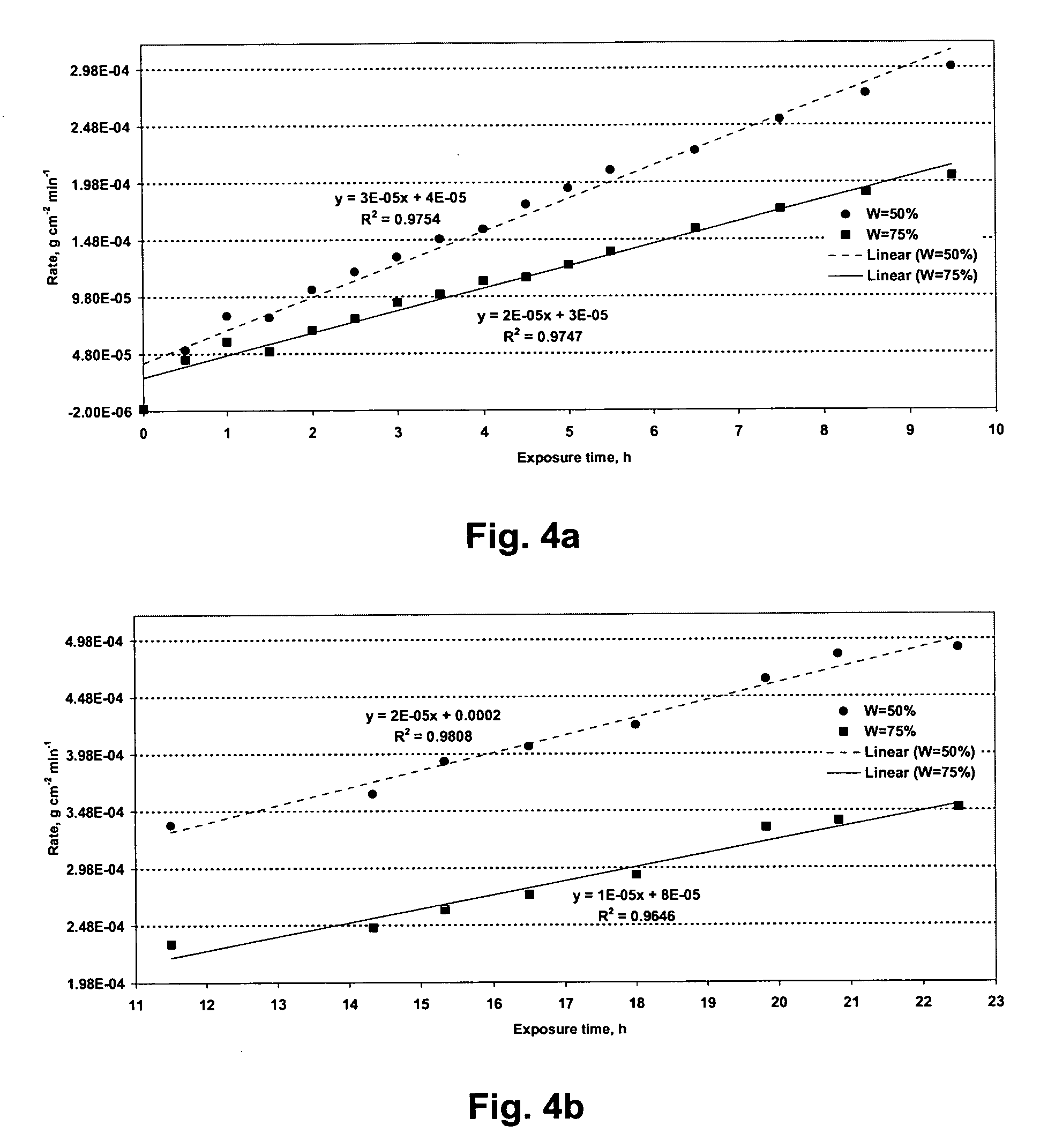Composite materials and method for making same
a technology of composite materials and fibers, applied in the field of composite materials, can solve the problems of emerging or evolving applications that are not well met by existing products, mature products, and often rather complex reasons for adding fibers
- Summary
- Abstract
- Description
- Claims
- Application Information
AI Technical Summary
Problems solved by technology
Method used
Image
Examples
example 1
Hardfacing Appliqué for Rock Crusher Faces
[0074] Hard particulate component: coarse grain tungsten carbide, titanium carbide, zirconium carbide, zirconium oxide, tantalum carbide, niobium carbide, hafnium carbide, chromium carbide, vanadium carbide, and / or crushed cemented carbide comprising from about 20% to about 97% by weight of the composite material and having average particle size of about 5 microns up to about 10,000 microns.
[0075] Carrier component: a fugitive polymer comprising about 1% to about 20% by weight and offering clean burnout during initial heat-up of the appliqué.
[0076] Additives: Copper-base braze alloy comprising about 0% to about 50% by weight.
[0077] The density of the appliqué preferably will be relatively high due to high loading of the hard particulate component, ranging from about 2 g / cm3 to about 10 g / cm3 and typically approaching or exceeding the calculated solids limit, as shown by dashed line 7 on FIG. 1. The form of the composite will be that of ...
example 2
Preparation of Wear Surface on a Metalworking Tool
[0078] Hard particulate component: coarse grain tungsten carbide or titanium carbide comprising from about 20% to about 97% by weight of the composite material and having an average particle size of about 5 microns up to about 10,000 microns.
[0079] Carrier component: a fugitive elastomer comprising about 1% to about 20% by weight and offering clean burnout during initial heat-up of wear surface.
[0080] Additives: a transition metal-base braze alloy, such as a cobalt-, Ni—Co, or Ni—Cu base braze alloy or titanium alloy would be typical, but more expensive Ag-base brazes could also be used. The transition metal-base braze alloy would comprise from about 0% to about 50% by weight of the composite.
[0081] The density of the appliqué preferably will be relatively high due to high loading of the hard particulate component, ranging from about 2 g / cm3 to about 10 g / cm3 and typically approaching or exceeding the calculated solids limit, as...
example 3
[0082] Hard particulate component: medium grain tungsten carbide comprising from 0% up to about 98% by weight and having an average particle size of about 2 microns up to about 5 microns.
[0083] Carrier component: a polymer comprising from about 2% to about 50% by weight and providing a controlled and relatively constant viscosity.
[0084] Additives: stabilizers, such as UV stabilizers, and colorants for identification comprising from 0% up to about 30% by weight. Must be compatible with the specific carrier and would typically be readily available within the plastics industry.
[0085] The density of the putty preferably will be moderate, ranging from about 2 g / cm3 to about 8 g / cm3 due to the presence of the hard particulates. The putty will be preferably extrudable under low pressure, i.e., less than 689.5 kPa (100 psi), and resistant to flow separation. The putty also preferably will be non-corrosive, will have low toxicity, and will be readily recyclable...
PUM
| Property | Measurement | Unit |
|---|---|---|
| particle size | aaaaa | aaaaa |
| density | aaaaa | aaaaa |
| density | aaaaa | aaaaa |
Abstract
Description
Claims
Application Information
 Login to View More
Login to View More - R&D
- Intellectual Property
- Life Sciences
- Materials
- Tech Scout
- Unparalleled Data Quality
- Higher Quality Content
- 60% Fewer Hallucinations
Browse by: Latest US Patents, China's latest patents, Technical Efficacy Thesaurus, Application Domain, Technology Topic, Popular Technical Reports.
© 2025 PatSnap. All rights reserved.Legal|Privacy policy|Modern Slavery Act Transparency Statement|Sitemap|About US| Contact US: help@patsnap.com



